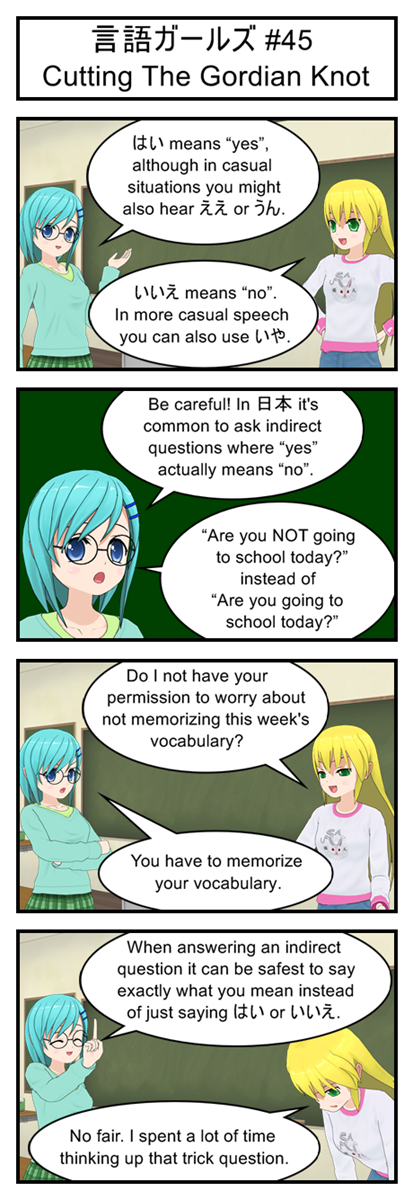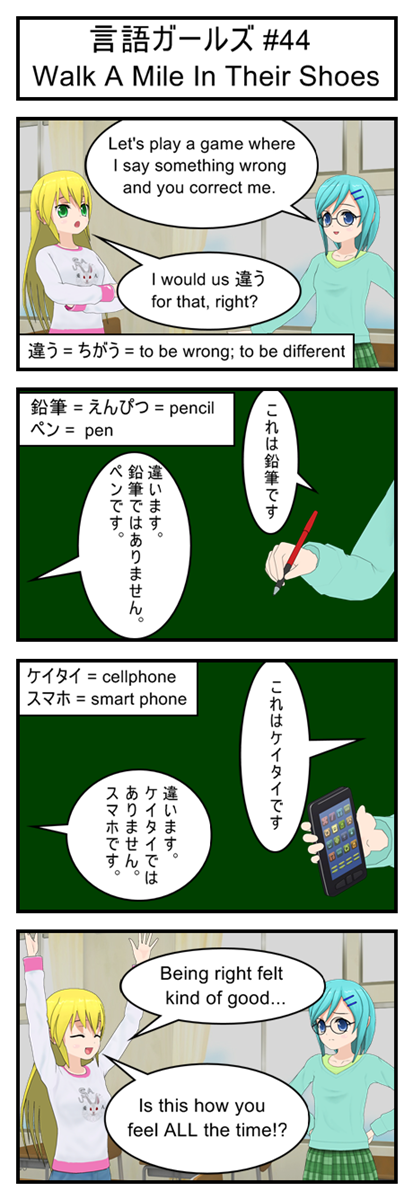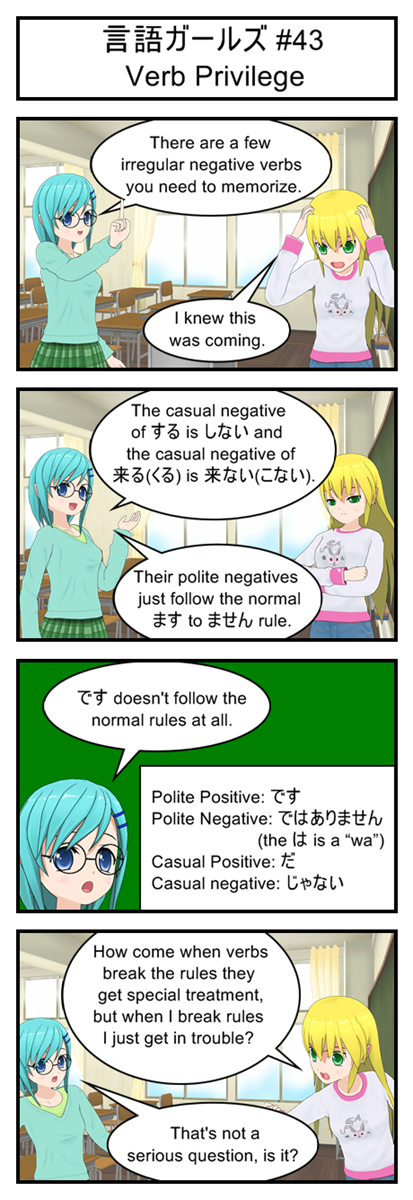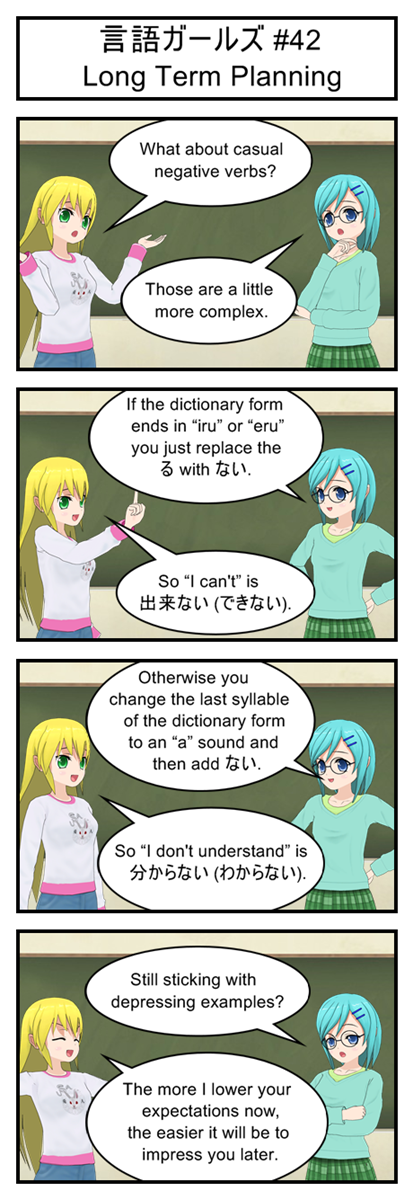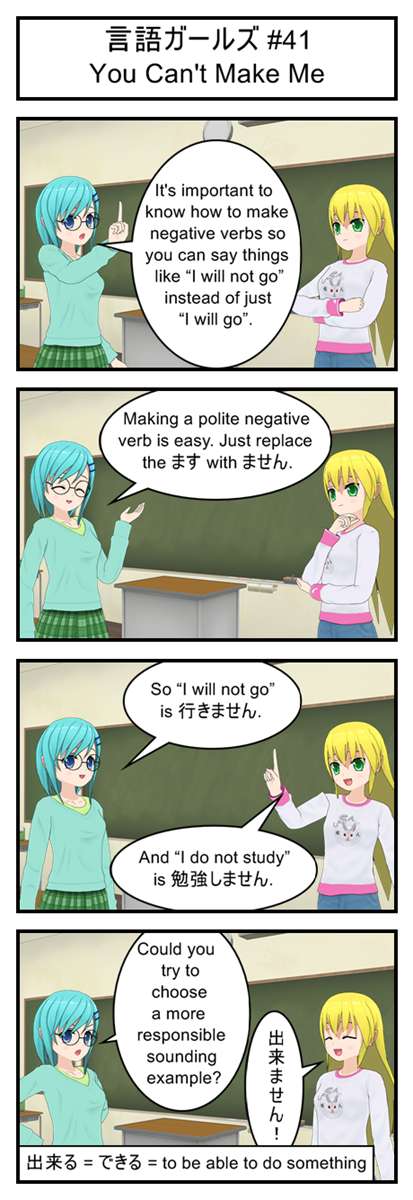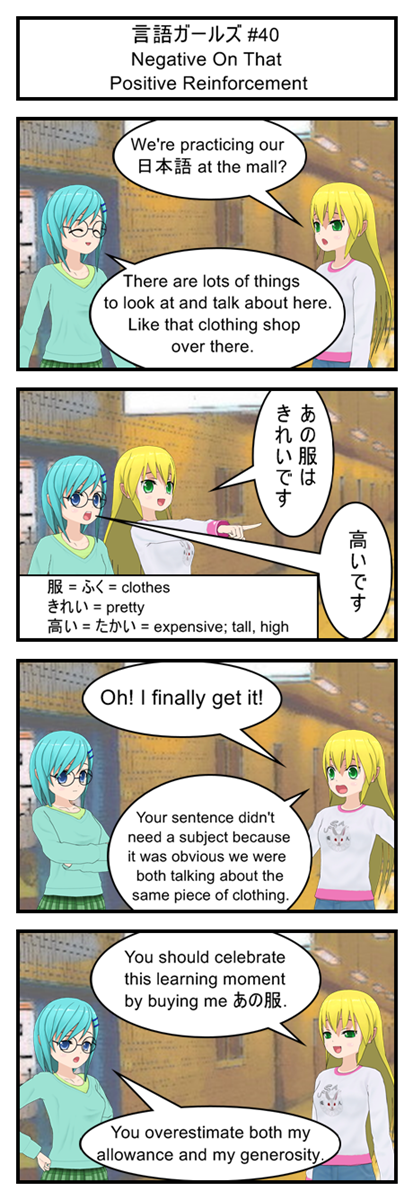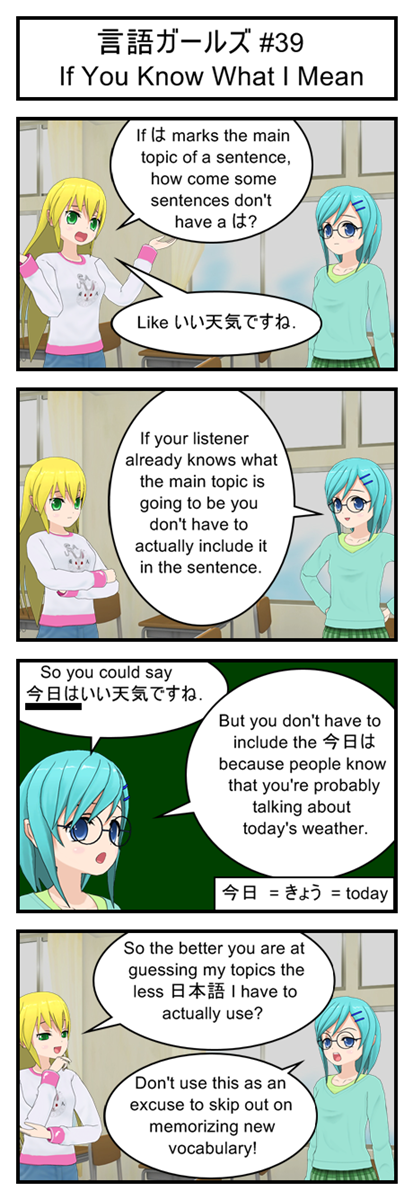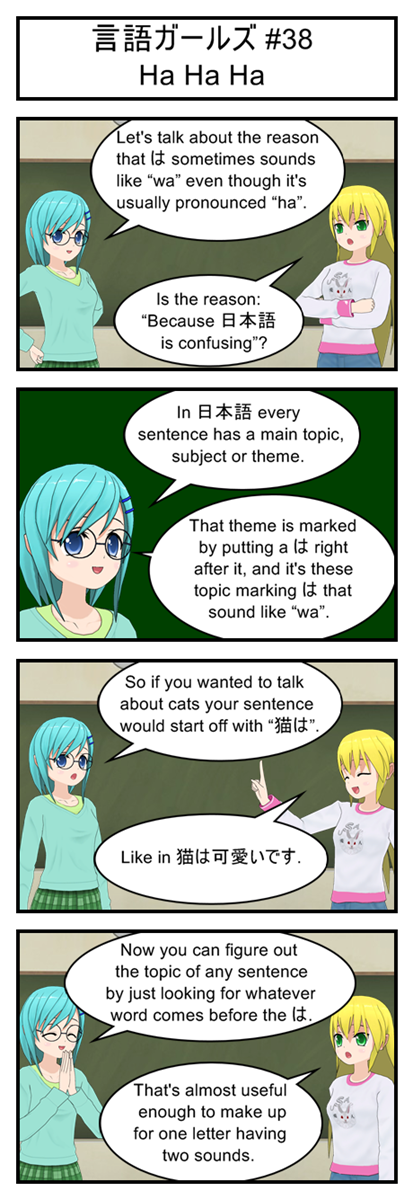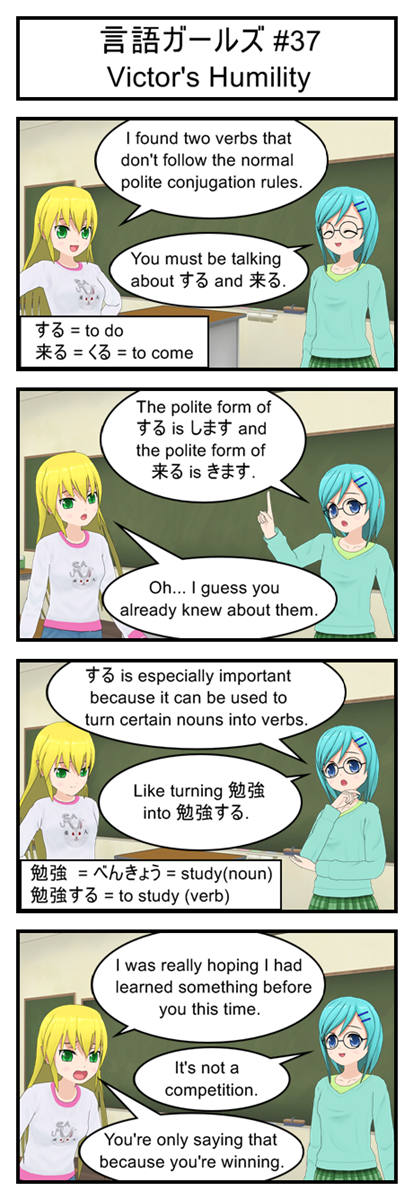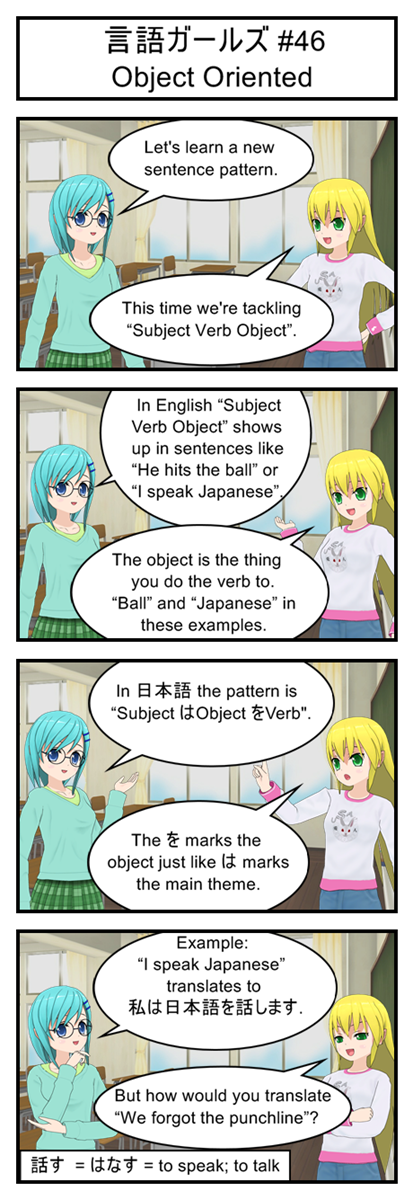
Objects really open up the sorts of sentences you can say. Now instead of just cryptically mumbling “I read” we can tell people exactly what we read. Instead of announcing “I see” we can tell people what we see. This is a definite upgrade!
Vocabulary
話す = はなす = to speak; to talk
Transcript
言語ガールズ #46
Object Oriented
Blue: Let’s learn a new sentence pattern.
Yellow: This time we’re tackling “Subject Verb Object”.
Blue: In English “Subject Verb Object” shows up in sentences like “He hits the ball” or “I speak Japanese”.
Yellow: The object is the thing you do the verb to. “Ball” and “Japanese” in these examples.
Blue: In 日本語 the pattern is “Subject はObject をVerb”.
Yellow: The を marks the object just like は marks the main theme.
Blue: Example: “I speak Japanese” translates to 私は日本語を話します.
Yellow: But how would you translate “We forgot the punchline”?
